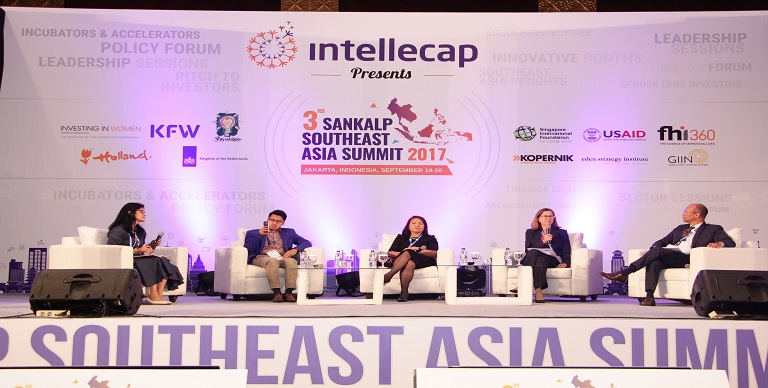Catalysing gender lens investing to strengthen women entrepreneurship in Southeast Asia

Client: Investing in Women
Challenge
Enabling strategic alliances to develop a thriving SME sector ecosystem for women-led enterprises in Southeast Asia
Outcome
Multi-stakeholder convening including funders, investors, and entrepreneurs that enabled sharing of insights, deliberations on barriers and launch of a unique woman focussed fund.
Approach Explanation
A vibrant and dynamic SME sector holds the key to achieving broad-based and inclusive growth in developing countries. Data indicates preferential treatment to men led organisations by banks and financial institutions to provide capital. Out of $11 bn credit gap experienced by SMEs in Southeast Asia region, $ 6 bn is contributed by women managed enterprises. Lack of knowledge among women regarding available financial products coupled with lack of self-confidence of availing a loan leads to approximately 70% of the women-led SMEs having limited access to finance. Investing in Women (IW) and Intellecap initiated a dialogue and collective action on the issue.
Through Sankalp Forum , Intellecap enabled multi-stakeholder dialogues, strategic networking and announcement of new initiatives like special funds for women entrepreneurs by Patamar capital and Women’s opportunity Fund set up by Small Enterprise Assistance Fund (SEAF). Sessions focussed on Blended Finance to Mobilize Capital for Women’s SMEs; Market Enablers – Transforming the Environment for Women in Business and Gender Lens Investing – Advancing Gender Equality, Generating Financial Returns. The dialogue included discussions such as business incentives to improve the business climate, industry initiatives to galvanize support for gender lens investing, and efforts to address market failures through de-risking mechanisms. The session on gender lens investing described the process of integrating gender into investment decision making and explored how investing in women expands into currently untapped market opportunities, whether in: women-owned and women-led businesses lacking access to productive capital; companies that promote workplace equity (in staffing, management, boardroom representation, and along their supply chain); or businesses that offer products and services that significantly improve the lives of women and girls. Insights from these discussions were adopted by the IW team in their subsequent program strategies.




